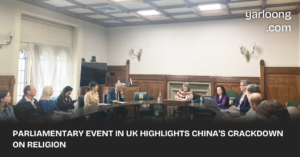China’s latest release of its “standard map” has reignited territorial disputes and diplomatic concerns, as it includes contentious regions like Arunachal Pradesh, Aksai Chin, Taiwan, and parts of the South China Sea. The map, unveiled on August 28, 2023, showcases China’s perspective on global geography, potentially escalating tensions with its neighbors.
The 2023 edition of China's standard map was officially released on Monday and launched on the website of the standard map service hosted by the Ministry of Natural Resources. This map is compiled based on the drawing method of national boundaries of China and various countries… pic.twitter.com/bmtriz2Yqe
— Global Times (@globaltimesnews) August 28, 2023
The 2023 edition of China’s official map was launched by the Ministry of Natural Resources during the Surveying and Mapping Publicity Day celebrations in Deqing county, Zhejiang province, as reported by the China Daily newspaper. Notably, the map emphasizes China’s claims over the nine-dash line, encompassing a significant portion of the South China Sea, a region where Vietnam, the Philippines, Malaysia, and Brunei also assert territorial rights.
The recent meeting between Prime Minister Narendra Modi and Chinese President Xi Jinping at the BRICS Summit in Johannesburg, South Africa, saw India voicing concerns over unresolved border issues. Foreign Secretary Vinay Kwatra highlighted India’s apprehensions regarding the Line of Actual Control in the Western Sector of the India-China border areas during discussions with President Xi Jinping.
Wu Wenzhong, the chief planner of China’s Ministry of Natural Resources, emphasized the significance of surveying, mapping, and geographic information in the nation’s development, as per China Daily. He highlighted their role in supporting natural resource management and ecological construction.
Earlier this year, Beijing unilaterally “renamed” 11 Indian locations, including mountain peaks, rivers, and residential areas. In response, Arindam Bagchi, the official spokesperson for the Ministry of External Affairs (MEA), stated that such attempts by China have been condemned before, emphasizing that Arunachal Pradesh remains an integral part of India.
However, this isn’t Beijing’s first attempt at renaming Indian locations. In 2017 and 2021, China’s Civil Affairs Ministry renamed several Indian sites, leading to political confrontations. New Delhi had then criticized China’s expansionist intentions. Beijing’s recent claims on parts of India’s Arunachal Pradesh, asserting it as part of greater Tibet, further underscores its territorial ambitions.
ANI reports highlight that China has more territorial disputes than the number of countries it shares borders with. Under Xi Jinping’s leadership, the Chinese Communist Party (CCP) has consistently employed manipulative tactics to assert control over sovereign territories, often disregarding international norms in its territorial ambitions.






